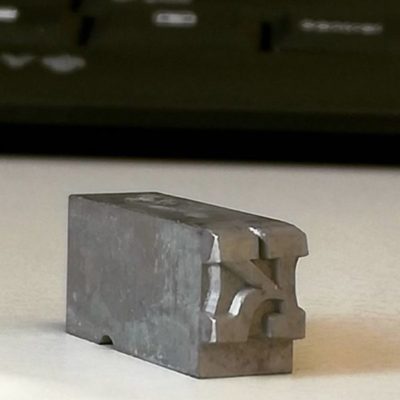My roots
After the War, Quintino had a shop with drawers containing pieces of type.
His son Pippo had learnt to cleverly stitch the spines of books and used to help him out in the shop after school.
Papa went on, years later, to make use of these skills in his work as a surgeon, and I, who was born the same day as Gutenberg, became the translator with the craze for printing in all its forms.
That is why this letter K, a present from a new client, is so precious to me.
This is the start of an idea for my new website, and with it we will move forward into the future, but with respect for memories of the past.
I’d like to share this comment left by a friend and dear collegue, Oliver:

“At my school, a Benedictine boarding school, there was a print shop with a large treadle press, and I learnt something about hand printing there in my spare time. We used to print, for example, orders of service for high Mass on saints’ days. I learnt some of the terminology, including an amusing phrase which perhaps you have not met: the drawers of type, or “type cases” are stored in a cabinet as in Articolo 1. Each case has two handles at the front. When you want to use type in a particular font and a particular point size, you slide the case out and transfer it to the sloping top of a cabinet. You have to use the two handles on the front edge of the case to pull it out, but only half-way. You then transfer your grip to the sides of the case, at the point of balance, and move it to where you want it. If you are dreaming, and pull it open all the way, it falls to the ground, invariably upside down, scattering hundreds of pieces of type on the floor. The name for this particular dish is “printer’s pie”, and it does not taste very good.”